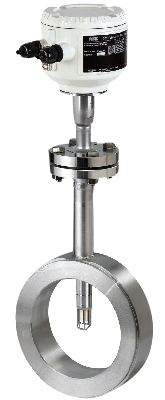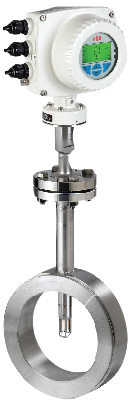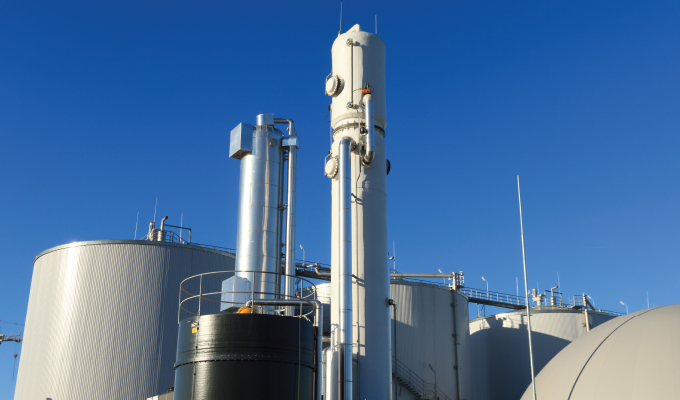By David Bowers, ABB
After years of heavy reliance on fossil fuels, societal and environmental pressures are leading governments worldwide to look for new ways of meeting their energy demands. One of these alternative fuel sources is biogas, a side product of anaerobic digestion in wastewater treatment processes. In this article, we’ll explain why thermal mass flowmeters offer water and sewage treatment utilities the ideal solution for accurately measuring biogas flows.
Recent declarations about the urgent need to reduce global greenhouse gas emissions have made it increasingly apparent that fossil fuels are no longer an acceptable or sustainable solution to meeting the world’s energy requirements. As a result, there has been a growing movement towards finding alternative methods of generating energy at scale while minimizing environmental impact.
One solution that is finding favor is biogas. Classified as a renewable energy source, biogas is produced when organic matter is digested down by micro-organisms through a process of anaerobic digestion. As the organic matter is broken down, it produces biogas—a mixture of methane, carbon dioxide, and traces of other contaminant gases.
This mixture can be combusted to produce energy, either through burning in boilers or recycling through a combined heat and power system. Often the electricity and waste heat generated from these processes are used to warm the digesters or to heat buildings, with excess being sold to suppliers or fed back into the local grid, providing an additional revenue stream.

HOW IS BIOGAS PRODUCED?
Utility companies and sewage treatment works use anaerobic digestion as part of their wastewater treatment processes to treat biodegradable waste and sewage sludge, also known as biomass.
Anaerobic digestion is a proven technology for sewage sludge treatment. During the anaerobic digestion process, microorganisms break down the organic matter contained in the sludge and convert it into biogas. At the same time, the sludge is stabilized and its dry matter content is enhanced.
Accurate measurement of biogas production enables the efficiency of the anaerobic digestion process itself to be calculated. For optimum efficiency to be achieved, it is particularly important to strike the right balance. Adding excessive biomass may inactivate the biomass, requiring a cost-intensive restart, while administering too little can impair electricity and heat generation, potentially reducing revenue.
The ability to correctly measure biogas flows is also important where combined heat and power (CHP) plants are used to help generate on-site electricity and heating. In order to maximize the electricity and heat generated from biogas, there needs to be a consistent supply of biogas to the CHP plant from the anaerobic digestion process. For this to happen, the flow of biogas needs to be accurately measured in order to achieve a balance and calculate the amounts of natural gas that may be needed to increase the biogas heating value.
In both cases, difficulties can arise that can affect many of the technologies commonly used to measure biogas flows.
In many cases, variations in the quantity and pressure of the biogas produced can be caused by factors such as the time of year, temperature changes during the digestion process and the amount of sewage sludge entering the treatment works. This can make it difficult for flowmeter technologies that measure volume flow and rely on pressure and temperature compensation to obtain an accurate mass flow measurement.
The quality of the biogas itself can also pose problems, with high levels of particulates and moisture that can impair the performance of orifice plates or meters with moving parts such as turbine flowmeters.
These problems can be overcome by using well installed thermal mass flowmeters. Capable of measuring mass flow directly, they can provide a mass flow rate in kg/h without any additional measurements or calculations.

HOW DO THERMAL MASS FLOWMETERS WORK?
Thermal mass flowmeters for biogas applications work on the hot film anemometer, or thermal dispersion principle.
A heated platinum resistor is maintained at a constant over-temperature in relation to an unheated platinum sensor that is the same temperature as the gas flow. One of these resistors assumes the temperature of the flowing gas, whereas the other resistor is electrically heated and, at the same time, cooled by the gas mass flow. A control circuit applies heat to the resistor so that a constant temperature difference exists between the resistors. With a known and constant gas composition, the mass flow can be determined based on the relationship between the heater current and flow rate with no need for additional pressure and temperature compensation.
With no moving parts, thermal mass flowmeters are ideal for handling challenging conditions characteristic of biogas, eliminating the need for maintenance to deal with problems such as clogging.
As well as being suitable for measuring low flow rate, thermal mass flow meters are better suited to monitoring the anaerobic digestion process due to their low pressure loss. Because thermal mass flowmeters take measurements using two small probes on the end of an insert, they form only a minor obstruction in the surrounding flow. This means that correctly sized thermal mass flowmeters offer an extremely small pressure drop, which is important in this application where the gas pressure can drop to very low levels.
With a turndown of 100:1 they can also offer highly accurate measurement at particularly low and variable loads, with the resulting data able to be used to help optimise the efficiency of the anaerobic digestion process.
INSTALLATION TIPS FOR TOP THERMAL MASS METERING PERFORMANCE
To optimize measurement performance in anaerobic digestion processes, it is important to ensure thermal mass flow meters are installed correctly. Installation should be behind a foam trap and gravel filter to maximize measurement accuracy and reduce contact with condensate. Installing the meter in a 90-degree position can also afford protection against measurement interference caused by condensate. Further interference can also be avoided by fitting a water trap to capture water and moisture build up.
SUMMARY
With the cost of energy produced by conventional sources continuing to escalate, the use of biogas to help address on-site energy requirements and as an additional potential revenue stream offers an increasingly attractive proposition for water utilities looking to save costs and boost profits.
With their inherent operational benefits, plus a low cost of ownership through the elimination of peripheral temperature and pressure equipment and the reduced need for maintenance, thermal mass flowmeters offer the ideal solution for biogas measurement applications.
FOR MORE INFORMATION
Siemens Digital Industries Software, a business unit of Siemens Digital Industries, is a leading global provider of software solutions to drive the digital transformation of industry, creating new opportunities for manufacturers to realize innovation. With headquarters in Plano, Texas, and over 140,000 customers worldwide, we work with companies of all sizes to transform the way ideas come to life, the way products are realized, and the way products and assets in operation are used and understood. For more information, visit www.sw.siemens.com.
David Bowers is process flow products manager for ABB Measurement and Analytics. With ABB’s knowledge about flow measurement and management, customers have access to over 100 years of flow measurement and control experience to help them save cost and increase profits. For more information, visit www.abb.com/flow.
MODERN PUMPING TODAY, October 2019
Did you enjoy this article?
Subscribe to the FREE Digital Edition of Modern Pumping Today Magazine!



